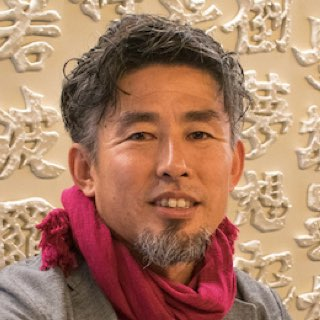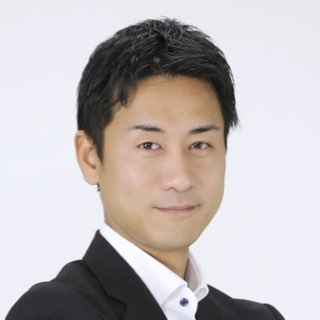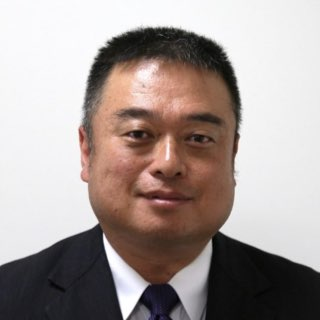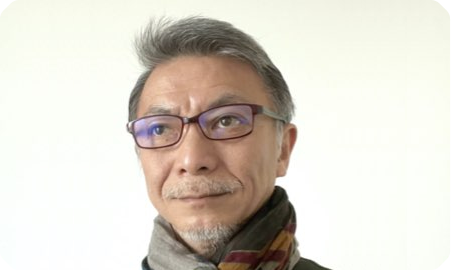
COLUMN
Search by keyword
- All
- Ryotei & Restaurants
- Lodging/Hotels
- Producers
- Technology
- DX (Digital) & SNS
- City Planning
- Utilization
- Gastronomy and Culinary
- Japanese Nature
- Japanese history and traditional culture
- Japanese Food Culture
- Agriculture
- Fisheries
- SDGs
- Local production for local consumption
- Foreigner Activation
- Experience
- Overseas Expansion
- Fermentation
- Public-private partnerships and collaborations
- Sake
- Community Revitalization
- Spirituality
- Japan of the Sea
- Mountain Japan
VIEW ALL
-
Read more

13 Pointers for Circular Economies from Satoyama Culture
More than ten years have passed since COP10 was held in Nagoya and the world was introduced to the concept of satoyama—a unique environment where people and nature coexist in harmony— and the concept seems to be gradually taking root. Elsewhere, the impacts of climate change are becoming more apparent worldwide, and the COVID-19 pandemic has demonstrated the need for society to take a new direction. While the definition of circular economy seems to vary to region, the main concept is that—in contrast to a linear economy (use and dispose) and even reuse—a system where used products and materials disposed in the production process are reproduced into new products, given new value, and then sold again. In many rural regions of Japan, where the satoyama wisdom has been passed down from generations to generations, this circular approach is a core of people’s lives and continues to this day. With rice, for example, the ingredient in Japanese sake and sushi, both of which are becoming increasing popular worldwide, an incredibly efficient cycle has been in place for generations. It is a well-known fact that sake lees, a byproduct of sake brewing, are used to make amazake (a sweet, non-alcoholic sake) and a wide range of pickles including Narazuke. Meanwhile, in the production of daiginjo and other types of sake with high rice polishing ratio, a large amount of rice flour is generated as a byproduct. This rice flour is reused in rice crackers and dumplings. Rice bran is another byproduct of the production process, and in the Hida area of Japan where I live, this has been reused as a kind of wax for polishing the floors and pillars of wooden houses for many years. Further, after the rice bran has been used to care for the home, it is then scattered onto nearby fields, returned to the soil, and reused as fertilizer for new crops. Examples such as these are too numerous to see throughout satoyama areas. Another example can be seen in the use of the kaya grasses used to make thatched roofs, such as those in the UNESCO World Heritage site of Shirakawa-go. Harvested grass is used as snow shelters in the drying process, and then used for thatched roofs after drying. Later, part of the roof that have been damaged by wind and rain is removed and reused as livestock feed. This is then digested by the […]
-
Read more

9 Education & Geo-gastronomy
“Let’s think about ways to minimize food mileage,” “If we can reduce meat consumption by promoting vegan foods, we can cut CO2 emissions,” and “I wonder if there are any local foods that have gone unnoticed…”—These are some of the remarks from a class of sixth grade students at the Keio Yochisha Elementary School. The classroom discussion among these sixth grade students is gaining momentum as they seek to widely communicate their ideas to society. In November 2021, one class from the sixth grade at Keio Yochisha Elementary School participated in the Islander Summit Ishigaki, giving an online presentation on the theme “Food of the Future.” For me, developing ambitions and ideas to transform society for the better is an important part of education. As such, using my position as a teacher, I have sought to shine a light on the relationship between the environment and food—something which children will be familiar with—and set up the following activities on the “Food of the Future” theme. October – A lesson from Kenichi Watanabe, representative at Geo Gastronomy, introducing a whole range of food-related issues and advanced case studies. – An online lecture and interaction with Tomoko Kitamura Nielsen, environmental director on the Danish island Lolland, talking about food-related environmental awareness in Denmark and advanced case studies. – An online lecture and interaction with Hitoshi Sugiura, winner of the gold prize at the World Vegan Cooking Contest, about the environmental impact of food and vegan cuisine. – Use of official World Food Forum videos as teaching materials to further understanding of the diversity, cyclicity, and sustainability of food. November – Presentation at the Islander Summit and comments from experts. – Online lecture and interaction with Prof. Seiko Shirasaka from the Graduate School of System Design and Management at Keio University about advanced space utilization and environmental issues from a space perspective. Something that every child around the world does every day is sit down for a meal. Helping children understand the relationship between food and the environment can help them realize the close link between themselves and society’s problems. In the lesson from Kenichi Watanabe, children were surprised to learn about the katemono (edible wild plants) recipes that were made to overcome hunger in the Yonezawa domain during the Edo period. Some children suggested that if we had a modern-day version of these katemono recipes, we might be able to help countries […]
-
Read more

3 Japan’s Coexistence with Nature and Expectations for the Future of Food Culture in Society
The Ise Jingu Shrine hosts approximately 1,500 festivals and rituals each year, but perhaps the most important one is the Kannamesai festival, which is a symbol of Japan’s rice culture. Among these annual festivals, the Shikinen Sengu ritual is said to be the shrine’s most solemn ceremony, that the shrine’s deity (the sun goddess Amaterasu) is transferred to a new shrine building every twenty years. This In the Man’yoshu book of poems and other classical texts, the Ise Jingu Shrine is so called as Kamukaze no Ise, or Ise of divine winds. “Divine winds” brings to mind a gentle climate, natural features, and sufficient amount of rain for abundant harvests. I believe it is the ideal representation of Ise. Moreover, according to the Nihon Shoki, or Chronicles of Japan, during the reign of Emperor Suinin, Amaterasu said to Yamatohime-no-mikoto, “This Ise of divine winds is a province where the waves of heaven continuously reach the shore.” Amaterasu is a symbol of the sun, and her words imply the sun, the wind and the waves nurtured the nature of Ise, and show how the sacred city exists as one with nature. Food, clothing, and shelter are essential for humans These three elements are also an essential part of the Shikinen Sengu, which was first conducted around 1,300 years ago. Here I would like to focus on the food that have been offered forshrine deities throughout the shrine’s long history. Today, global environmental consideration are growing and the increase in greenhouse gas emissions and the disposal of leftover food are frequently broadcasted on news. I believe that the food culture at Ise Jingu Shrine could contribute to the future of global society. According to a record from 804 (Enryaku 23) of the ceremonies held at the Kotai Jingu Shrine, which is the inner shrine at Ise, at the Tsukinamisai festival held on June 15, local peasants from Shima province offered abalone and turban shells to the deities. Meanwhile, in chapter 4 of the Engishiki (Procedures of the Engi Era; completed 927 (Engi 5)) , which is about ceremonies at the Ise Jingu Shrine, offerings at three important shrine festivals were said to be dried foods, sea slugs, skipjack tuna, seaweed, salt, and oil. In the medieval text Jinposho—a list of districts within the Ise Jingu Shrine —we can see that, including from 14 districts in Ise province, the inner and outer shrines […]
-
Read more

2 Qualitative Global Changes and Expectations for Japan
Securing energy resources is paramount for our livelihoods. Until Russia’s invasion of Ukraine hit the headlines in 2022, decarbonization and the SDGs were the main topics in the UK, which hosted COP26 in the autumn of 2021, and in other environmentally advanced European countries. With it now compulsory for companies to disclose their environmental information, systems are in place to limit funding in industries that have negative environmental impacts and in companies with negative, passive approaches to environmental measures. Carbon neutrality, meanwhile, has been positioned as an achievable target through enormous funding and technological development, which to be prepared mainly in advanced nations. Elsewhere, through Russia’s invasion of Ukraine, the distressing dependence of European countries on Russian energy has become increasingly apparent. Since the beginning of life, securing energy resources has been the most important task for humanity in every age. Behind the scenes, however, there has been a qualitative change in values that can be viewed as a countercurrent in time. Changes in the Monetary Value There are some who believe that the monetary value is decreasing, while others believe that the more money they have, the happier they will be. Let us use real estate as an example. New-build condominiums in the city center are often sold out on the spot. Chances of purchasing the most popular homes are less than a hundred-to-one, while the prices of these condominiums have increased by approximately 50% over the past decade. Let us now compare the value that can be obtained from a residence that cost 40 million yen ten years ago with that costs 60 million yen today. Functional value, such as convenience and safety, and emotional value, like views from the windows and local atmosphere, remain almost completely unchanged. Even if you pay 50% more, you do not get 50% more value. There are two things we can learn from this example. The first is that the soaring prices caused by the recent excess liquidity have not increased the value of an object, but rather lowered the monetary value. The second is that there is a limit to measure value in terms of monetary value. Changes in Society Next let us look at changes in social trends except for monetary value. I have intentionally created a list of the trends with two extremes. From measures of the whole to measures of the individual From individual ownership to collective ownership […]

